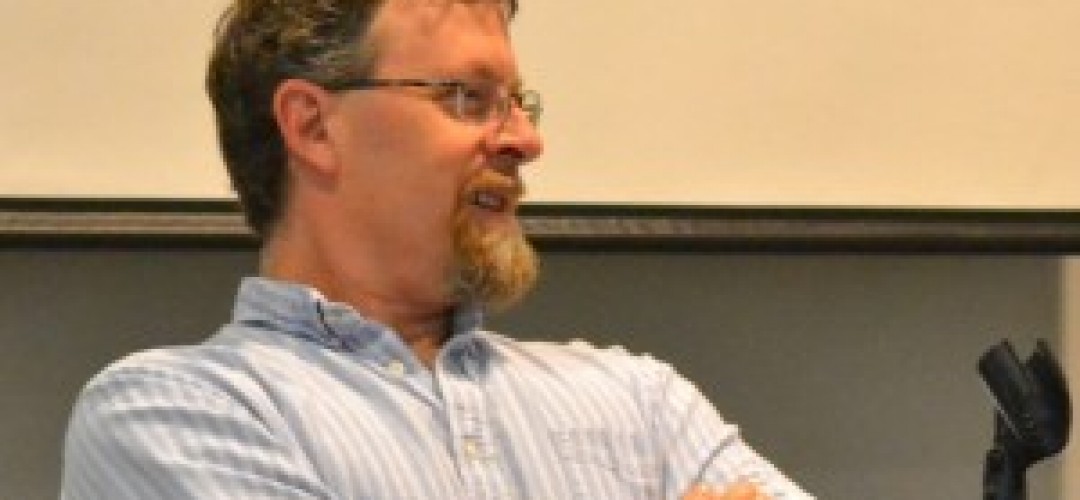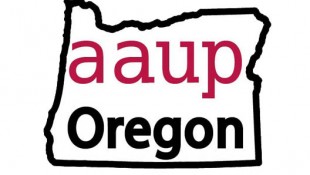United Academics: more draconian cuts at the UO

 by Michael Dreiling, President
by Michael Dreiling, President
As the University of Oregon enters its second spring under the helm of President Michael Schill, we face another round of deep cuts to the faculty who advance the university’s core mission of educating Oregon’s students. Last year saw more than 75 faculty members severed from the university’s ranks. This year, a similar number of faculty will have their employment, in many cases long-term employment, terminated by the university administration. Over the course of two years, the university will lose more than 10% of its instructional workforce.
If these cuts were being made strategically in areas where faculty were not needed, we might understand. Unfortunately, the decisions to terminate many of the university’s faculty are not being made to trim excess staff or strengthen our education and research missions. In fact, many of the proposed cuts will damage these missions and make it harder for UO faculty to continue providing Oregon’s students with a quality education.
Our status as an AAU school lies at the heart of recent events. One of the metrics by which the AAU measure schools is the number of tenure-track and tenured faculty who teach students. Theoretically, tenure-track faculty are more up-to-date on the latest research and can communicate this information to undergraduates. The ratio of tenure-track faculty teaching students also ensures that the university is not reliant on low pay, temporary teaching staff.
This metric-driven approach to university planning has several drawbacks. Most importantly, there is no way for a single metric to measure the health of the university. While having more tenure-track faculty in front of students might be a laudable goal, is it right in every department at the UO? Is now the time to make this one measurement the main driver of academic decision-making? Will it help us advance our educational mission? Unfortunately, these questions hardly have time to be asked, let alone answered, in the administration’s rush to eliminate positions.
The School of Architecture and Allied Arts (AAA) offers a particularly egregious example of this hasty pursuit of single-minded metrics to the detriment of students and undergraduate education. The School of Architecture and Allied Arts has decided to eliminate the Arts and Administration (AAD) program with a wave of draconian faculty cuts that will assure an unhappy death to the AAD major. There is no indication that these decisions are about budgets or finances. Enrollment in the major is strong and the curriculum serves historically underrepresented students. Over 25% of recent graduates were students of color and 10% were nontraditional students. Graduates of the program are leaders in the arts and nonprofit scenes throughout the country. AAD’s professional training has roots that extend over forty years at the UO and the faculty have given decades of their careers and lives to build this successful program. In return, the university has given them a pink slip.
The justification for this extreme, harsh decision, as is so often the case at the university these days, is that the program has too many non-tenure-track faculty teaching classes. Eliminating the program was an easy way for administrators to instantly improve their metrics, which has become a Faustian imperative above all else.
These decisions by the university administration will have a devastating impact on our ability to deliver and provide a quality education. No institution can lose 10% of its instructional workforce over a period of two years and expect to deliver the same level of quality. Faculty cuts in the Arts and Sciences threaten the integrity of second-language training and will reduce course offerings that in-state Oregon students disproportionately favor. In numerous majors, students will find four-year graduation more difficult as they witness their favorite instructors cut in this draconian management model.
Furthermore, these cuts will increase the share of administrators at the UO, tilting an already top-heavy administration toward an unsound tipping point. As the number of administrative positions grows and further cuts eliminate middle-class faculty jobs in our community, a larger share of student tuition and state dollars go toward a growing administrative class. How does this help students? What will happen to the courses once taught by NTTF? What about the UO’s plan to improve the four-year graduation rate?
The university is, as always, in a budget crisis, but UO budgets are not a zero-sum game. As we have seen all-too-often, when the university wants to do something, whether it be replacing a football coach, building a new science campus, or hiring another administrator, money can be found. The decisions being made will damage the educational mission of the university and they are being made so that we can hit an artificial number divorced from the needs of our students.

